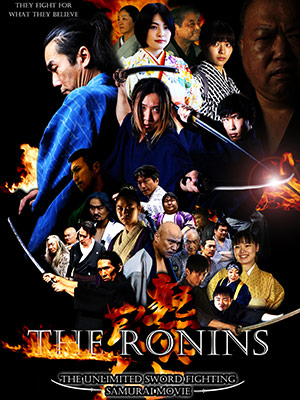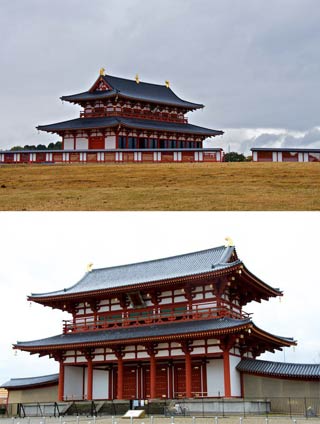The Heijo Imperial Palace is currently under reconstruction for the 1,300th anniversary of Nara as the capital of Japan. It was the Imperial Palace of Japan from 710-784 C.E. when Nara became the first permanent capital of Japan. It is designated as a UNESCO World Heritage Site although there is very little actual historical architecture or remains to actually see there apart from a few foundation stones. It is hoped that the new building will be completed in time for the anniversary celebrations on November 7th this year.
In the Nara period, the power and influence of Buddhism grew under the supervision of Buddhist monks who had studied in and returned from Tang China. Temples in Japan accumulated vast landholdings during this era and their priests gained tremendous political influence. Buddhism in Japan followed the Chinese model of government control: ten Buddhist masters who had studied in Tang China as well as the superintendents placed in charge of temple property and their militant guards, extended state control over all Buddhist matters. Abbots were ordained only under government authorisation.
At the beginning of the Nara period there were nearly two hundred Buddhist temples which grew to over a thousand by 784. Government controlled Buddhism was the state religion, and the network of Buddhist temples served to buttress the authority of the central state.
When the Imperial court had had enough of the powerful Nara Buddhist clergy who had become increasingly involved in the affairs of the Imperial government, the then king of Japan (Emperor Kammu) decided to move the capital to Kyoto in 784. The entire palace was left to ruin and in the Kamakura period (1185–1333) records show that there was nothing left at all save for a few stones.
The city of Nara including the Heijo Imperial Palace, was designed to mimic the city of Chang'an, the capital of China during the Tang Dynasty. Contact with Tang Dynasty China increased during the Nara Period (710-784). Paintings and sculpture during the period came to be modeled closely on the style of the contemporary T’ang dynasty. The word “Nara” is derived from the Korean word meaning “country”.
(by Junpei Hayakawa)






